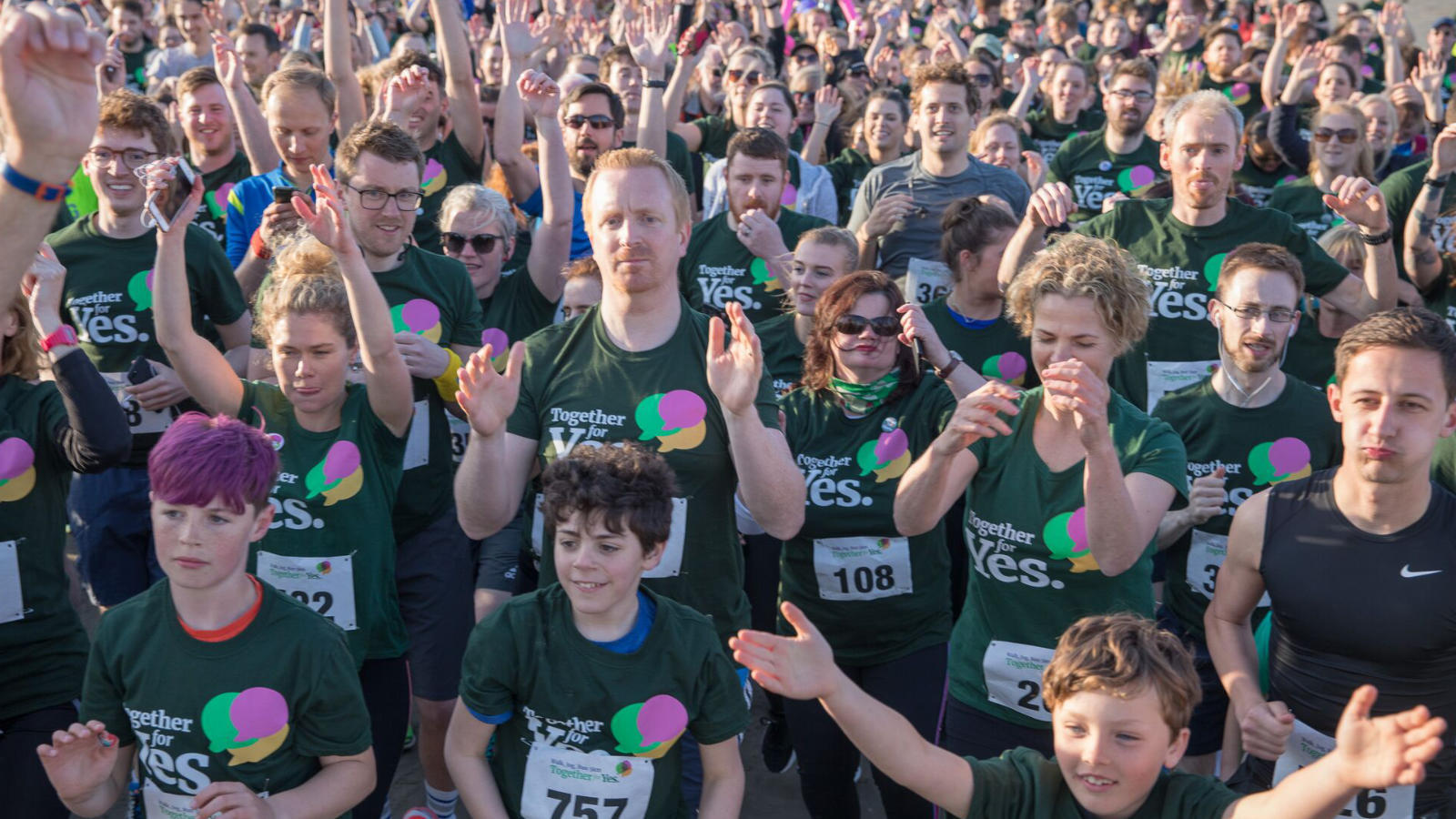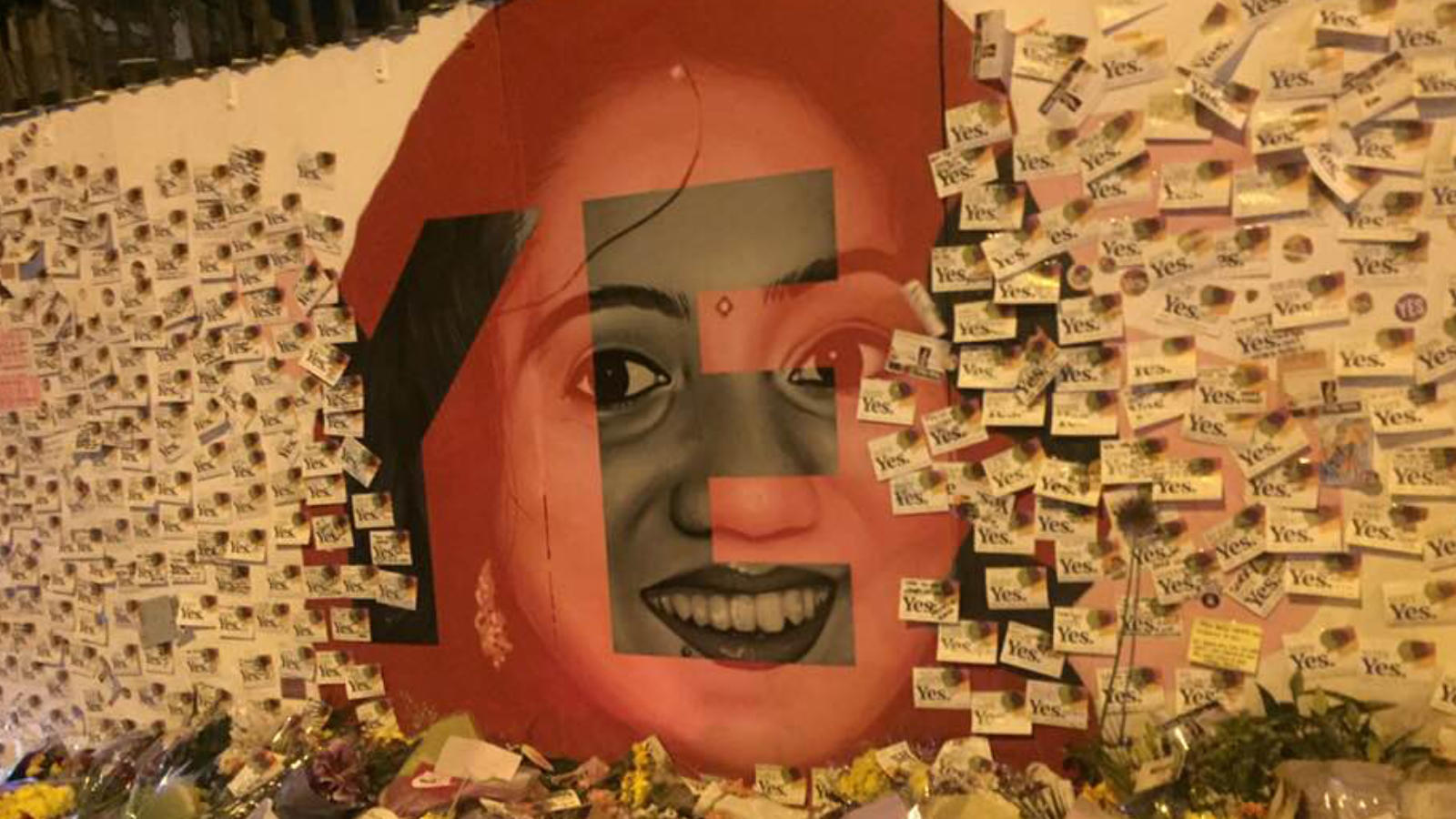Stories
Ireland says yes…again!
From repeal the 8th to same-sex marriage, Denise Charlton shares her lessons on how we win referendum campaigns.
Denise Charlton | 9 Jul 2018

Run for Yes. Image credit: Denise Charlton.
Last Sunday the State apologised to the LGBTI community, mentioning those that had been criminalised, incarcerated and paid tribute to Declan Flynn who was brutally murdered for being gay. An apology was also given also to the women who had been incarnated in institutions by the Church and State. Our Gay Taoiseach (Prime Minister) and Lesbian Minister for Children made heartfelt remarks. Over 60,000 people marched in Dublin Pride.
How did we get here?
The Irish public voted twice in recent years for substantial progressive change.
On the 25th May 2018, 68% of people said yes to a more compassionate Ireland. The 8th Amendment was voted into the Constitution in 1983 by referendum. Abortion had always been illegal but it was not cited in the 1937 Constitution.
This year Ireland voted to repeal the 8th Amendment. Now every woman can make her own decisions during pregnancy and access abortion if she needs it here in her own country. As an outcome of the referendum on reproductive rights, it feels like some justice for women has been served, that after all these years, women will finally be treated with respect and dignity in this country.

In 2015, Ireland became the first country in the world to bring in same-sex marriage by a popular vote. Another referendum took place in Ireland and 62.07% of the electorate voted in favour of the amendment to extend civil marriage to same-sex couples.
Both referenda campaigns were built on years of activism and work that were successful in persuading the political system of the need to change our constitution and to put it to the Irish people. Both campaigns showed public support for the change early on in the campaigns but also showed that this support could be eroded very quickly. Here I will share some of my learnings from being involved in both campaigns.
The Catholic Church
The Catholic Church has been a dominant force in Ireland for decades. The Church and state were intertwined and although have changed somewhat, their power still remains evident by the fact that 95% of our primary schools are under Catholic control in the Republic of Ireland. However, evidence and stories of child abuse scandals, stories of babies buried in a septic tank and the incarnation of young, unmarried mothers, has seen the Churchs authority loosen over recent years. Divorce was the first example of this. The ban on divorce was removed from the constitution by popular vote in 1983: only by 9,000 votes and with a huge city bias.
Political Participation

Both recent referenda show a gender and a generational shift in Irish political participation. Prior to the marriage referendum, it has been presumed that the young were politically disinterested and would not bother to vote. The Yes Equality campaign in 2015 proved these presumptions wrong. In the recent referendum, this was again challenged. What we saw was the high prevalence of young women: A striking feature and a key factor in the positive outcome.
8 Lessons
1. Head Quarters and Strategy
For the campaign for Marriage Equality, a headquarters was set up. This gave the campaign opportunities to resource other activists and civil society players. This was done through the development of a strategy, a brand, the messaging, fundraising, merchandising, communications support, and political engagement. The campaign had to understand, acknowledge and leverage the strengths that our advocates and partner groups brought to the campaign. Opportunities were provided for organisations and leaders to engage and participate with all of the above. Through their engagement, they could shape our strategy. A feedback structure was also implemented in our work through meetings, events, webinars and feedback from canvassing operations. On the back of the Marriage Equality success, it was decided the campaign to Repeal the 8th would follow the same model.
2. Communication is key
We learnt in both campaigns we had to answer the questions in the minds of the voters. This meant sometimes we spoke about the issues in ways that were outside of our way of speaking within the sector. We had to really listen to what the concerns were and then answering those concerns in a language that appealed to that particular audience. We spoke about love not rights, health not abortion. We didnt emphasise womens rights or human rights, the right to choose or bodily autonomy. We emphasised the hard cases of rape and foetal abnormality and the lived experience of women.
3. How is this relevant to me?
People need to see the relevance of the issue within the context of their own experience. The need to connect the campaign goal to the lives of ordinary citizens. For example, the job of the yes marriage equality campaign was how to connect the struggle for gay rights in Ireland, with the concerns of ordinary Irish people. To have a minority issue become a majority issue and be relevant to the doorsteps. On the issue of marriage equality, we had to make Irish people see that a yes vote concerned them just as much as it did gay people in Ireland. We took on a divisive issue, a minority issue, and made it everyones business your child, your cousin, your friend and your colleague. Both campaigns gave a glimpse of the kind of nation we could have leveraged that basic human desire to achieve ones better self.
4. Attitudes matter
We learnt to understand how attitudes are shaped: Who we must target and how. Our communications strategies were grounded on solid research that reflected the concerns, values and priorities of those we were trying to influence especially the middle ground undecided voter. The research was crucial in shaping the message, tone, shape and mode of the campaign to appeal to these voters.
5. Storytelling
Storytelling was at the core. Both referenda put personal stories at the heart of the campaigns. Exit polls in both referenda showed the individual stories of those affected by the Eighth Amendment or exclusion from marriage equality played a huge factor in a large number of people voting yes. In this age of digital democracy, we learnt that large numbers of facts are overwhelming. With so much so-called truth, the influencing value of personal stories was key to cut through the noise and distraction.
6. Messengers
Messengers were picked for their ability to talk to the undecided. These were complemented with unusual messengers, those who people didnt expect to hear, influenced and connected with the middle ground. We found unlikely messengers that didnt fit the image people expected worked well. We spotlight the voices of permission givers like athletes, celebrities, faith leaders, the conservative parent of a gay son or lesbian daughter, and other role models. The former President of Ireland as a mother of a gay son. The medical professional in Repeal, who faced 14 years in prison and whos patient could die as a result of the 8 amendment.
7. Use your feet
Both issues were forced on the political agenda by thousands of activists up and down the country. These activists ran stalls, marched, organised, leafletted, canvassed, shared their stories and made so much noise they could be ignored no longer. Webinars were used to help drive those on the ground. Canvass leaders from Dublin came into HQ while those taking charge of canvasses around the country logged in remotely. Everyone in those webinars left with people unafraid to knock on doors to canvass, organise meetings and deliver on our strategy. It was these individuals that built the power for the final results. Even if they are not with a political party and where the power of this canvass in the final result is assumed.
8. Smart social media
Cutting-edge social media strategy and analytics also ensured our campaigns had an advantage. Social media gave opportunities to tell personal stories and advance messages, fundraise and test messaging and engagement, communicate with our supporters. The strategy also allowed individuals to be involved in their own place and pace. We channelled a nationwide army of voluntary effort by implementing a technology-assisted and monitored canvass operation. We used cutting-edge analytics and effective crowd-funding operations to fund our work.
In conclusion
We can never take these wins for granted and there is of course so much work to be done. But we have lived to great social change in recent years, which is to be celebrated.